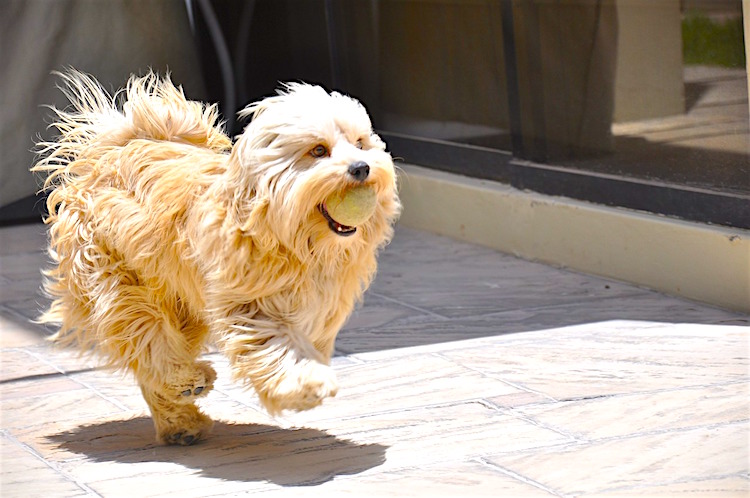
Sometimes, dogs walk or run at a slight angle while still moving forward. It’s almost like their front legs aren’t keeping up with their back legs, causing their rear end to angle out a bit. If it’s not your own dog with this peculiar gait, it might seem a little weird. But if your dog is the one walking sideways, it can be worrisome. However, in most cases, this sideways shift isn’t as odd as it seems.
Crabbing
The American Kennel Club describes “crabbing” as when a dog “moves with its body at an angle to the line of travel.” In other words, crabbing is when a dog is moving forward but their body is turned at a slight angle. It’s also sometimes called “sidestepping.”
Reasons for Crabbing
There are several reasons why a dog might move at an angle, and more often than not, it’s just an interesting quirk. Here are some common reasons for dogs to “crab”:
1. It’s just who they are.
Just like humans have their specific way of walking, dogs have their unique characteristics too. Some dogs naturally have a sideways gait, and there’s usually no reason to worry. It’s just a part of who they are.
2. The body is still growing.
Some puppies and young dogs who walk sideways often grow out of it later in life. This sideways gait is usually due to their legs being too long for them to coordinate properly. As they continue to grow, their legs catch up with their body, and the sideways walking diminishes. However, certain breeds may maintain this quirk throughout their lives, such as Border Collies, German Shepherds, Vizslas, Pointers, and Spaniels.
3. Their dominant leg is taking over.
Just like humans have dominant arms or legs, dogs can have a dominant leg too. When a dog’s back leg is dominant, it may push off the ground harder than the other leg, causing the dog to shift toward the middle of their body during a trot. As the dog slows down, the force decreases, and their gait returns to normal.
Other Causes
While crabbing is often harmless, it’s essential to have it checked by a veterinarian. Other factors may contribute to the sideways walking, such as nutrition deficiencies, structural imbalances, orthopedic problems, neurological disorders, or anal gland issues. Dogs exhibit various behaviors, and when they can’t communicate what’s wrong, their bodies will naturally compensate or find relief in different ways. It’s challenging to determine the root cause without professional advice.
If you notice your dog walking sideways, especially if it happens suddenly, it’s best to take them to the vet for a thorough examination. Your pet’s well-being is paramount, and it’s always better to be safe than sorry.
Frequently Asked Questions
Coming soon…
Conclusion
While watching a dog walk sideways can be intriguing, it’s not always a cause for concern. Dogs have their unique ways of moving, and sideways walking can be a natural quirk for many. However, it’s essential to seek professional opinion from a veterinarian if you notice any sudden changes in your dog’s gait to ensure their health and well-being. Remember, every dog is special in their own way, and it’s part of what makes them so lovable.
